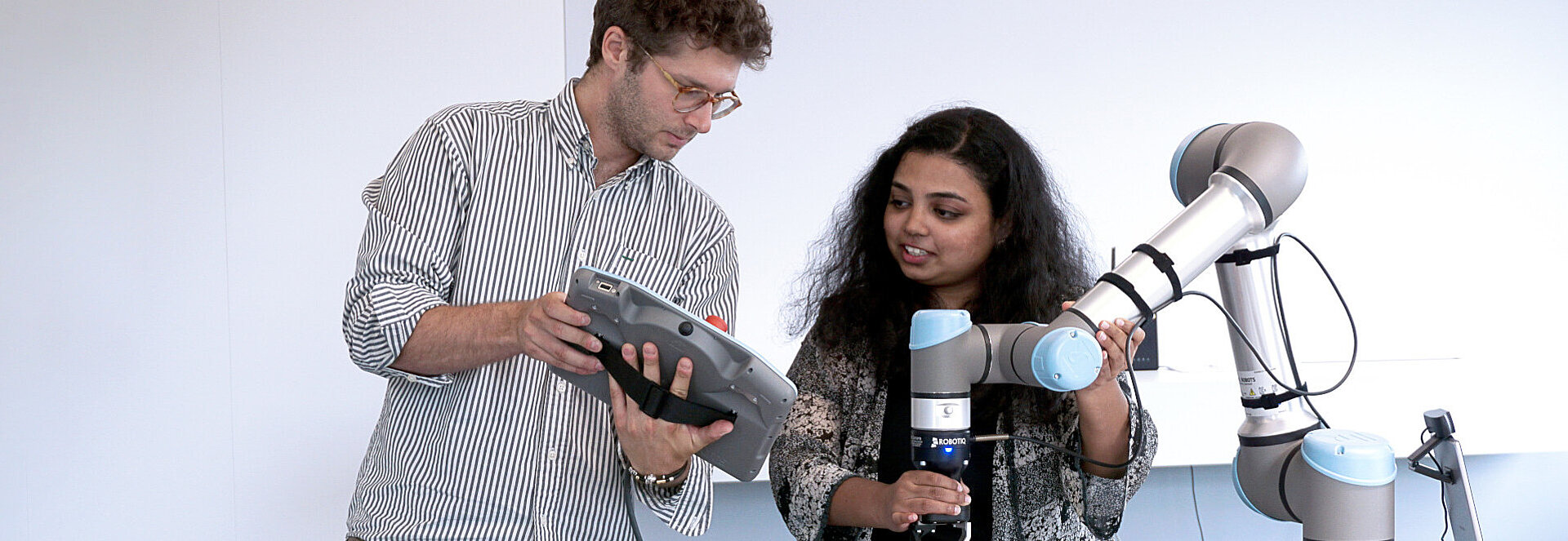Cobots of the Future
Robots and smart devices have become a permanent part of today’s industry 4.0. Yet with increased human-robot interaction comes a decrease in human-human interaction, which can pose risks to workers’ mental health.
The MindBot project, funded by the European Commission, is an international endeavor that assembles a highly skilled and diverse team from Germany, Italy, Belgium, and Croatia. It boasts the inclusion of two Bavarian partners: the University of Augsburg represented by the Chair for Human-Centered Artificial Intelligence and KUKA AG.
Pooja Prajod, a computer scientist from the University of Augsburg, and Matteo Lavit Nicora, a mechanical engineer from Italy's STIIMA-CNR, are exploring how the MindBot project can foster the mental well-being of workers. The collaboration has been facilitated by Nicora’s multiple visits to the AI Production Network in Augsburg which researches AI-based production technologies and is supported by Hightech Agenda Bavaria, the Bavarian government’s research and technology investment initiative. The Augsburg-based company KUKA is also involved in the MindBot project, with a team of sociologists investigating the psycho-social impacts of Artificial Intelligence on humans.
We aim to support collaborative activities between humans and robots that are not only efficient but also stimulating and gratifying for the human participant.Professor Elisabeth André, Head of the Chair for Human-Centered Artificial Intelligence, University
The MindBot project aims "to promote the mental health and well-being of factory workers, adopting a user-centric design approach in industry," says Prajod. Although efficient, the introduction of robots in the workplace can create stressful situations for workers. Often, workers are not acquainted with the technical details of the robots they work with. This lack of familiarity can lead to confusion and stress, especially when encountering error messages or when feeling overwhelmed by the demands of the technology. Prajod is therefore researching how to better support workers in their interactions with robots.
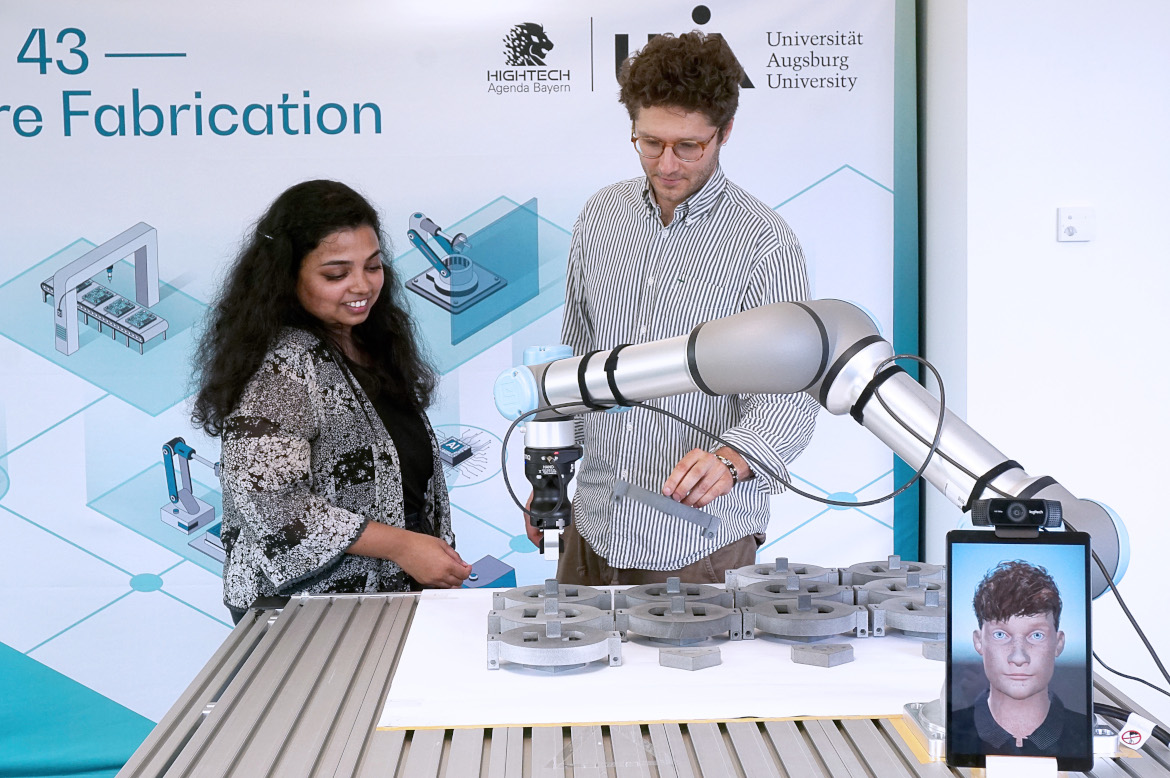
Task Allocation in the Workplace of the Future
The MindBot project adheres to the Human-Machine Interaction criteria for AI-based production, as established by a working group led by the University of Augsburg and the Fraunhofer Institute for Industrial Engineering (IAO) in Stuttgart as part of the platform "Learning Systems."
MindBot focuses on the intuitive use of collaborative robots, so-called cobots, which are based on a human-centered design approach to ensure a reasonable distribution of tasks between the human and the machine. "Distributing tasks efficiently means doing it in a way that acknowledges the worker’s skills," says Prajod. "One approach is to assign repetitive tasks to the cobot, allowing the worker to engage in more diverse activities that align with their abilities." In this way, apathy and boredom caused by tasks that are either too easy or too challenging can be avoided.
Intuitive Human-Cobot Communication
The MindBot project is pioneering the development of communication methods between workers and cobots that are inspired by natural face-to-face communication. As Prajod explains, "Intuitively, once a worker finishes a task and wants to collaborate with another worker, they make eye contact with the respective colleague." Programming the cobots in such a way that they can recognize and react to these social cues is an important goal of the project.
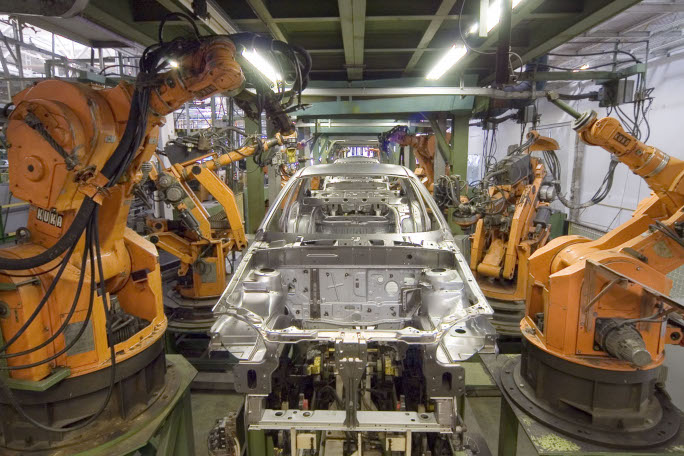
Another way to foster stress-free communication is achieved by integrating a customizable avatar to accompany the cobot. The primary aim is to humanize the cobot by giving it a ‘human’ face, which transforms its appearance from being just that of a machine to being something akin to a colleague. This strategy is designed to personalize the cobot, making it more relatable and approachable for human workers, thereby facilitating a more comfortable and collaborative working environment. In particular, the avatar may provide guidance in emotion regulation for human workers, as some strategies used by participants negatively impacted their well-being and productivity.
Creating a More Inclusive Industry with MindBot
The versality in cobot behavior also creates the potential for integrating people with autism spectrum disorders (ASD) into the workplace. High-functioning people with ASD often prefer a lower amount of social interaction in the workplace and appreciate greater continuity in their tasks, needs that can be met by cobots. Adaptation to these preferences allows for better integration of people with ASD into industry environments, benefiting not only the workers but also the companies, who have been searching for ways to employ neurodivergent people for a long time. "What is interesting," says Nicora, "is that in our performance analyses, the best-performing person belonged to the ASD group." "This finding highlights the often-overlooked potential of individuals with ASD and validates our efforts to establish inclusive workplaces," says André.
Challenges During the Project
While the MindBot project opens up a wide range of opportunities for steering the industrial sector toward the future of work, researchers face several challenges. One of them is the lack of established design guidelines to inform their development efforts. This is partly because cobots are still a relatively new phenomenon in the workplace. Additionally, the dual goal of utilizing cobots to promote mental health and including people with ASD is a completely new endeavor. Another hurdle is the complexity of applying new research methodologies to practical settings, which necessitates securing the commitment of companies to provide suitable test environments. "Getting real-life experience with actual workers is crucial, yet it presents a major challenge," says Prajod.
Benefits For Industry
The emergence of the new generation of cobots holds the promise of substantial benefits for industry. "Compared to traditional industrial robots, cobots allow for a higher degree of flexibility in developing production lines," says Nicora. Unlike large robots typically used in production, cobots do not pose a physical danger to the people working alongside them. They can therefore operate in the same space as the worker without physical barriers or other costly safety measures. "Of course, there are regulations on the maximum speed at which the cobot is allowed to operate," Nicora says. "There are also sensors that enable the cobot to detect collisions with another person or object." Another advantage is that cobots are relatively easy to program: "They can usually be controlled with simple drag-and-drop interfaces, eliminating the need for specialized software engineers."
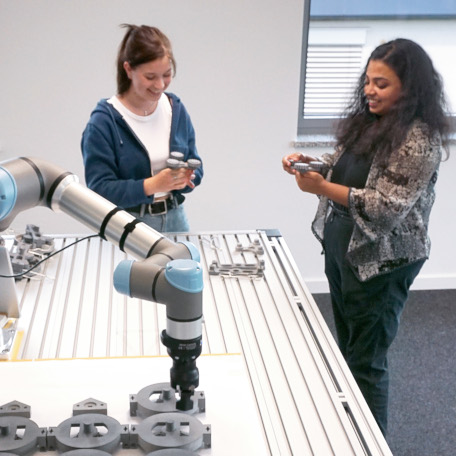
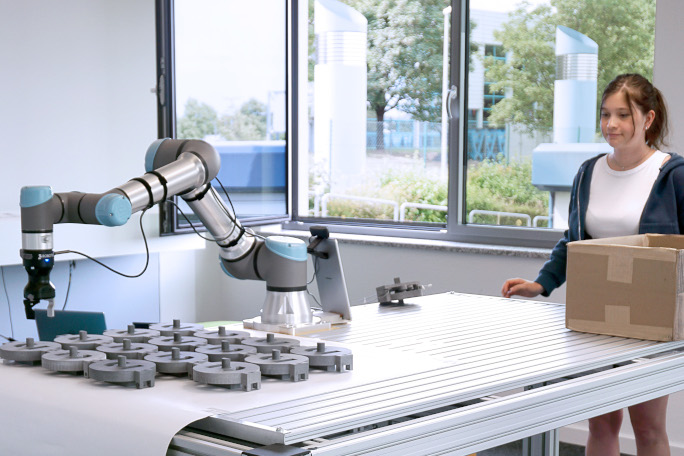
The Next Steps
The MindBot project has successfully completed its first three phases. "Phase one aimed at gathering a general understanding of current cobot usage in companies," says André. This initial phase involved collecting data related to mental health as well as conducting observations and interviews in companies already using cobots. Phase two then focused on enhancing the workers' experience by tailoring cobot technology to meet individual workers’ needs. The recently concluded third phase focused on evaluating the techniques developed in the project. To this end, a workshop with industry stakeholders was conducted including a presentation of the cobot and a discussion of its deployment in an industrial setting.
Looking ahead, future research will focus on conducting comprehensive studies involving a wider array of collaborative activities in real workplaces, taking into account the complementary capabilities and strengths of both human workers and cobots.



